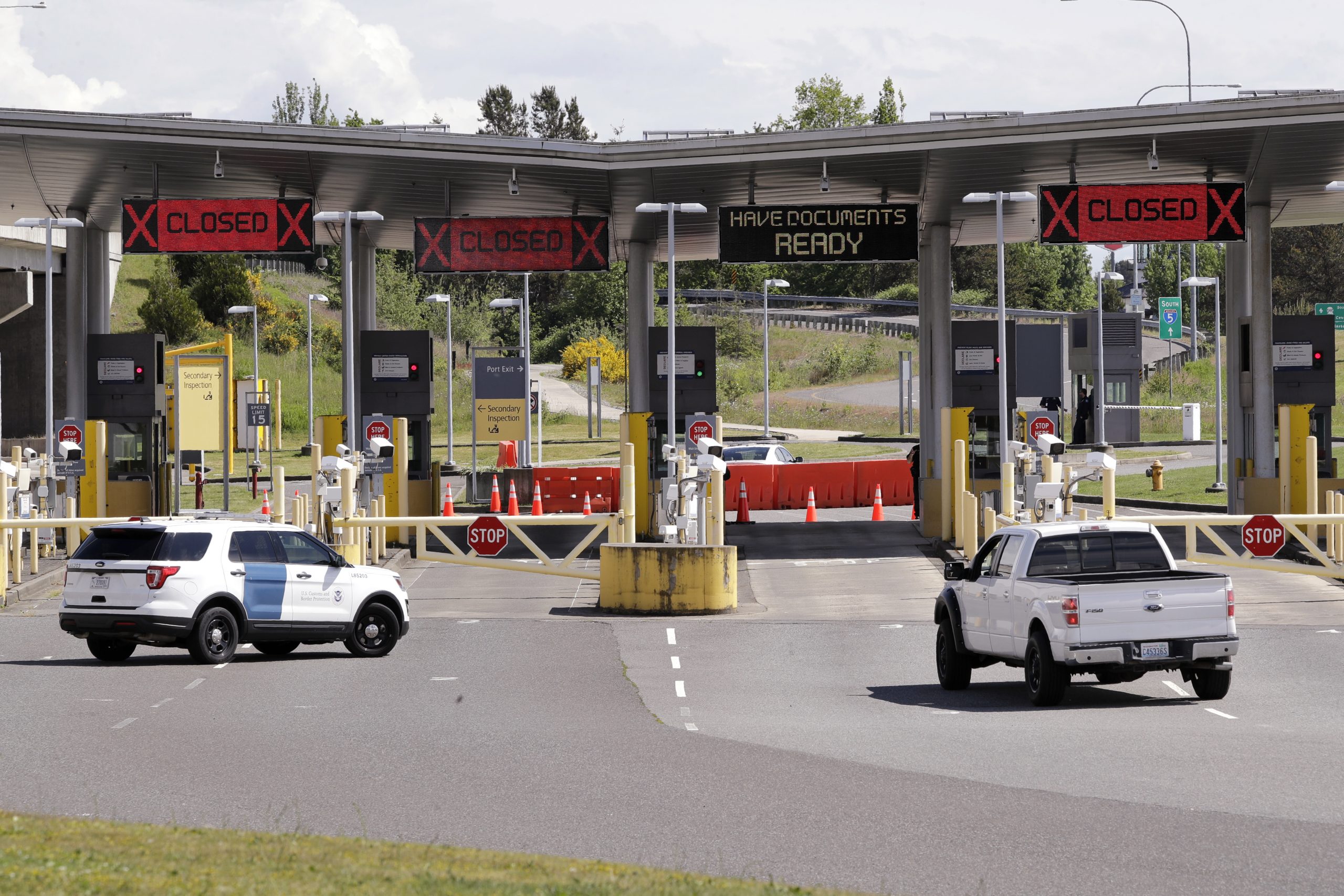President Biden took office with a promise to begin looking at how to reopen U.S. border crossings between Canada and Mexico — a move that travel and transportation officials welcomed but warned should not be rushed.
Among the more than 30 executive orders signed in the president’s first six days in office, Biden ordered the Centers for Disease Control and Prevention along with the departments of Health and Human Services, Homeland Security, State, and Transportation to begin talks with their Canadian and Mexican counterparts on how to end travel restrictions that have blocked all nonessential vehicles and pedestrians from entering or leaving the country since last March. The order mandated that U.S. leaders create new public health measures for the border and submit them to the White House by Feb. 4. Existing travel restrictions are set to expire Feb. 21.
“We are encouraged to see that conversations will soon commence on the reopening of the Canada and Mexico land borders, to help enable the safe return to travel when the time and conditions are right,” AAA Senior Vice President of Travel Paula Twidale said in an email to the Washington Examiner Monday.
Thomas Winkowski, who oversaw the federal law enforcement agency that manages the 167 land crossings on the 5,000-mile northern border, including Alaska, and 2,000-mile southern border, applauded the move.
“It’s a good idea that the president’s asking questions, and I don’t think anybody should be rushed into making the decision,” said Winkowski, former acting Customs and Border Protection commissioner. “You want to have the science on your side. You want to have the experts saying there’s less of a danger now. I don’t know that we’re at that point.”
Congressional Northern Border Caucus Chairman Brian Higgins, a New York Democrat, said the U.S.-Canada relationship took a “major hit” due to the border closures and supported finding a solution to begin reopening the border to all travelers.
The Trump administration imposed a ban on legal travel across the border on March 20, 2020, a week after former President Donald Trump declared the coronavirus a national emergency. The 10-month-long closure was made at the CDC’s recommendation, which has ordered subsequent renewals each month on the grounds that allowing nonessential travelers, such as tourists, to enter the United States poses a public safety risk.
The official government notice of the plan defines “individuals traveling for tourism purposes (e.g., sightseeing, recreation, gambling, or attending cultural events)” as engaging in nonessential travel. Essential travelers are considered those traveling for medical reasons, people going to school, people who work in the farming or agriculture industries, emergency and public health officials, members of the U.S. military, and commercial employees involved in cross-border trade. U.S. citizens and lawful permanent residents returning to the U.S. are exempt.
Biden spoke with Mexican President Andres Manuel Lopez Obrador and Canadian Prime Minister Justin Trudeau late last week. Trudeau said last Friday that high rates of cases in parts of his country made him skeptical of the idea, though Canada is looking at implementing coronavirus tests at its ports of entry, a possible first step to restarting travel.

Truckers are essential and transported more than $750 billion in trade to and from the U.S. and its neighboring countries, according to American Trucking Association estimates. Truck drivers transported 68% of all land trade between the U.S. and Canada in 2019 and 83% of trade between the U.S. and Mexico the same year.
Canadian government statistics show nonessential travel at its border dropped 95% between August 2019 compared to August 2020. Aaron Bowker, a spokesman for CBP’s Buffalo field office, said the amount of passenger traffic attempting to cross into New York from Canada declined by 95% last summer. As a result, officers have seen far fewer vehicles and fewer incidents of finding drugs, but when they do make a bust, they are seeing far larger quantities being smuggled, including cocaine, marijuana, and heroin.
Twidale noted that adequate testing and reaching certain minimums of people vaccinated were necessary before any changes are made.

